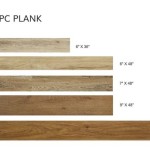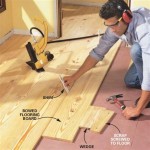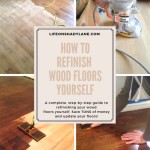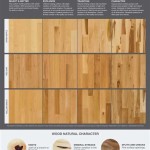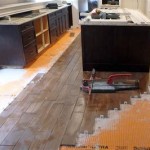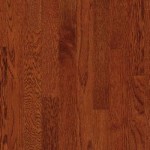Average Cost of Flooring a Loft: A Comprehensive Guide
Flooring a loft presents a unique set of considerations that impact the overall cost. Unlike standard rooms, lofts often have irregular shapes, varying subfloor conditions, and accessibility challenges, all of which influence material choices, labor requirements, and ultimately, the budget. Determining the average cost requires a thorough evaluation of these factors, along with geographical location and current market prices for both materials and installation services.
This article provides a detailed overview of the average costs associated with flooring a loft, breaking down the key cost drivers and offering insights into material selection and installation considerations. Understanding these elements is crucial for accurate budgeting and making informed decisions about your loft flooring project.
Before diving into specific costs, it's important to define the scope of the project. Are you simply replacing existing flooring, or are you starting from scratch with a bare subfloor? Does the subfloor require leveling or reinforcement? These preliminary assessments will significantly affect the final cost.
Key Cost Drivers for Loft Flooring
Several factors significantly influence the overall expenditure when flooring a loft. These can be broadly categorized into material costs, labor costs, and preparatory work costs.
1. Material Costs: The choice of flooring material is a primary determinant of the budget. Options range from budget-friendly laminate and vinyl to more upscale hardwood and engineered wood. Each material has its own price point, installation requirements, and lifespan, all of which contribute to the overall cost.
Laminate flooring, known for its affordability and ease of installation, typically ranges from $1 to $5 per square foot for the material itself. Vinyl flooring, including sheet vinyl, planks, and tiles, offers water resistance and durability, with prices ranging from $2 to $8 per square foot. Engineered wood flooring, a popular choice for its aesthetic appeal and stability, generally costs between $4 and $12 per square foot. Hardwood flooring, the most premium option, can range from $8 to $25 or more per square foot, depending on the species, grade, and finish.
Other materials, such as carpet, tile, and even specialized loft flooring solutions, each have their own pricing structure. Carpet costs vary widely based on fiber type, pile height, and density, while tile prices depend on the material (ceramic, porcelain, natural stone) and design. Specialized loft flooring solutions might include soundproofing underlayments or reinforced flooring panels, adding to the material expenses.
In addition to the flooring material itself, consider the costs of underlayment, adhesives, transition strips, and other necessary accessories. Underlayment, which provides cushioning, sound insulation, and moisture protection, typically adds $0.50 to $2 per square foot. Adhesives, required for some flooring types, vary based on the type and quantity needed. Transition strips, used to seamlessly connect different flooring types or to cover expansion gaps, can cost between $5 and $20 per piece. These seemingly minor expenses can accumulate and should be factored into the overall material budget.
2. Labor Costs: Professional installation is often recommended, especially for complex flooring projects or materials that require specialized skills. Labor costs vary depending on the complexity of the installation, the type of flooring, and the geographical location. Generally, labor costs range from $2 to $8 per square foot, but this can increase for challenging loft spaces.
Factors that influence labor costs include the size and shape of the loft, the presence of obstacles such as pipes or built-in structures, and the need for any subfloor preparation. Lofts with irregular shapes or tight corners require more cutting and fitting, increasing the labor time. If the subfloor is uneven or damaged, it may need to be leveled or repaired before the new flooring can be installed, adding to the labor costs.
Some flooring types are easier to install than others, which affects the labor rate. Laminate and vinyl plank flooring, often designed with click-lock systems, are generally faster and easier to install than hardwood or tile. Tile installation, in particular, requires specialized skills and can be more expensive due to the precision cutting and grout work involved.
Geographical location plays a significant role in labor costs. Labor rates are typically higher in urban areas with a higher cost of living compared to rural areas. It is advisable to obtain multiple quotes from qualified flooring installers to compare prices and ensure you're getting a fair rate.
3. Preparatory Work Costs: The condition of the existing subfloor is a critical factor in determining the overall cost of flooring a loft. Subfloor preparation may involve leveling, repairing damage, or adding additional support to ensure a stable and even surface for the new flooring.
Leveling a subfloor can be achieved by using self-leveling compounds or by installing plywood or OSB sheets to create a uniform surface. Self-leveling compounds are suitable for minor imperfections and cost approximately $30 to $50 per bag, covering about 50 square feet. Plywood or OSB underlayment can cost $1 to $3 per square foot, depending on the thickness and grade of the material.
Repairing damage to the subfloor may involve replacing rotted or damaged boards, patching holes, or reinforcing weak areas. The cost of repairs depends on the extent of the damage and the materials required. In some cases, structural repairs may be necessary, which can significantly increase the overall cost. Consult with a qualified contractor to assess the subfloor condition and determine the necessary repairs.
If the loft is being converted from an unfinished space, considerations for insulation and soundproofing are also critical. Including these measures add to the overall cost but ensure a more comfortable and functional living space. Insulation costs will vary depending on the type and R-value of the material selected.
Material Selection and Cost Considerations
Choosing the right flooring material for a loft involves balancing aesthetic preferences with practical considerations such as durability, maintenance, and cost. Each material has its advantages and disadvantages, and the best choice depends on the specific requirements of the loft space.
Laminate Flooring: Laminate is a budget-friendly option that mimics the look of hardwood or tile at a fraction of the cost. It is durable, easy to clean, and resistant to scratches and stains. However, laminate is not waterproof and can be damaged by moisture. It is also less comfortable underfoot compared to other flooring types.
Vinyl Flooring: Vinyl is a versatile and waterproof option that is suitable for lofts that may be exposed to moisture. It is available in a variety of styles and colors, including realistic wood and tile patterns. Vinyl is also easy to clean and maintain. However, it can be susceptible to dents and scratches and may not have the same aesthetic appeal as natural materials.
Engineered Wood Flooring: Engineered wood offers the look and feel of solid hardwood with greater stability and moisture resistance. It consists of a thin layer of hardwood veneer bonded to a plywood or high-density fiberboard core. Engineered wood is less expensive than solid hardwood and can be installed over concrete subfloors. However, it cannot be refinished as many times as solid hardwood.
Hardwood Flooring: Hardwood is a premium flooring option that adds warmth and elegance to any space. It is durable, long-lasting, and can be refinished multiple times. However, hardwood is more expensive than other flooring types and is susceptible to moisture damage. It is also more labor-intensive to install.
Carpet: Carpet provides warmth, comfort, and sound insulation, making it a suitable choice for bedrooms or living areas in a loft. It is available in a wide range of colors, styles, and textures. However, carpet can be difficult to clean and maintain and may not be suitable for lofts that are prone to moisture or spills.
Tile Flooring: Tile is a durable and waterproof option that is ideal for bathrooms or kitchens in a loft. It is available in a wide range of materials, including ceramic, porcelain, and natural stone. Tile is also easy to clean and maintain. However, it can be cold and hard underfoot and requires specialized installation.
When selecting a flooring material, consider the overall style of the loft, the amount of traffic it will receive, and the potential for moisture exposure. It is also important to factor in the cost of installation and maintenance when making your decision.
Installation Considerations and Cost Implications
The installation process can vary significantly depending on the type of flooring material and the condition of the subfloor. Proper installation is crucial for ensuring the longevity and performance of the new flooring.
DIY vs. Professional Installation: Some flooring types, such as laminate and vinyl plank, can be installed by homeowners with basic DIY skills. However, other materials, such as hardwood and tile, require specialized tools and expertise and are best left to professional installers. While DIY installation can save on labor costs, it is important to consider the potential for errors and the time commitment involved. Incorrect installation can lead to problems such as uneven flooring, gaps, and premature wear.
Subfloor Preparation: As mentioned earlier, subfloor preparation is a critical step in the installation process. A properly prepared subfloor provides a stable and level surface for the new flooring, ensuring its longevity and performance. Subfloor preparation may involve leveling, repairing damage, or adding additional support. Neglecting subfloor preparation can lead to problems such as squeaking, buckling, and cracking.
Specialized Installation Techniques: Some flooring types require specialized installation techniques. For example, hardwood flooring may need to be nailed or glued down, while tile flooring requires the application of mortar and grout. These techniques require specific tools and expertise and should be performed by a qualified installer.
Accessibility: Access to the loft space can also affect installation costs. If the loft is not easily accessible, it may take longer to transport materials and equipment, increasing labor costs. Consider the ease of access when obtaining quotes from flooring installers.
Waste Disposal: Disposal of old flooring and construction debris can also add to the overall cost. Some installers include waste disposal in their quotes, while others may charge it separately. Be sure to clarify this with your installer before starting the project.
In conclusion, flooring a loft involves a variety of cost factors that must be carefully considered. By understanding the key cost drivers, the material selection process, and the installation considerations, you can create a realistic budget and ensure a successful flooring project. Remember to obtain multiple quotes, research your material options, and prioritize quality installation for long-lasting results.

Loft Boarding Cost Guide 2024 How Much Is Insulation

Loft Flooring S Our Boarding Scotland Ltd

Loft Ladder Hatch Light And Boarding Fitted From 995

How Much Does Loft Boarding Cost In 2024 Checkatrade

How Much Does It Cost To Finish An Attic

Attic Flooring 101 All You Need To Know Bob Vila

How Much Does It Cost To Finish An Attic 2024 Data Angi

Loft Ladder Scotland Flooring

Loft Boarding And Flooring Guide Attic Board Benefits For 2024

Loft Boarding Cost Guide 2024 How Much Is Insulation
Related Posts

